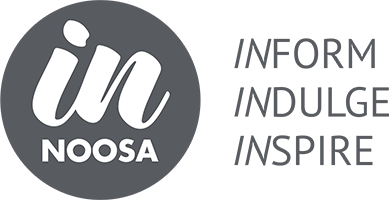
DIY Super with Morgans Noosa
John Caruso learns how you can gain more control, transparency and even flexibility over that superannuation nest egg – and it may be easier than you think.
According to superguide.com.au, as of May 2023, more than a million Aussies manage their own superannuation fund with almost $900 billion invested.
For us, the idea of consolidating the IN Publishing storage and office space led to questions about whether a self-managed superannuation fund (SMSF) could help us purchase a commercial space that could be leased back to the business to help build a stronger financial future.
I’m no expert so a consultation with two leading financial planners with Morgans Noosa, Adrienne Webb and Nicole Angelucci, was on the cards.
I wanted to understand the process, costs, and benefits of doing so and in turn shed light on how so many Aussies were “doin’ it for themselves”.
“A self-managed fund is very similar to a normal industry or retail super funds,” explains Adrienne. “You can hold a variety of different investments
in it, within reason as there are some restrictions on what investments you can hold. Investors will generally opt for a self-managed fund if they want flexibility with some direct kind of investments.
“For example, there are rules around property purchased specifically for investment purposes with regards to what kind of property you can hold in a self-managed fund.
“For residential property, it must be a pure investment and at arm’s length, so you can’t have your family or related parties staying there nor can you use it yourself. It must be deemed a proper standalone investment.
“There’s a little more flexibility with commercial property because you can have an office space that you can use and it must have commercial rates of rent and income, and it must be providing for your retirement.”
A bonus of managing your own super nest egg means the freedom of investing in direct investment such as shares,which when managed with an experienced adviser can provide growth and income returns for your portfolio. You can also invest in ‘things’ considered atypical.
“An SMSF can invest in collectibles, pink diamonds and things that are unusual that you wouldn’t have access to in a retail or industry fund,” Adrienne adds.
“Investors in self-managed funds might be people who like having transparency and control and often in an industry or retail fund, you’re limited to the investment options the fund managers provide for you.”
More flexibility, control and opportunity with self-managed funds also means extra obligations, like being your own trustee of the fund.
“You have to make sure that the fund is run within the guidelines of the, SIS the Superannuation Industry (Supervision) Act; that might sound onerous however you can get assistance in managing your fund through an administrator, who generally is an accountant or Financial Advisor who offers self-managed super fund administration services,” Adrienne said. “They’ll assist you in not only setting up your fund, but also creating the trust deed. The Administrator really holds your hand a lot and makes sure everything is compliant.”
Understand that there are many rules, ones that change often it seems, when it comes to accessing your superannuation, for example taxation rates and age.
“All the same rules of a normal super fund apply to SMSFs with regards to contribution and when you can access it, including meeting a condition of release, which is generally when you turn 65 or retiring permanently after your preservation age, which is from 55 to 60,” Nicole says.
Moving your retirement savings, or rolling over which is the ‘lingo’, from one super fund to another is common if you change jobs or employers, and surprisingly, moving your nest egg into a self-managed fund from a retail or industry fund is just as easy with Nicole saying that it generally is a simple rollover from one fund to another.
“You’d set your self-managed super fund up first, making sure that it’s compliant and ready to receive funds before you would apply through the administrator of the existing fund to bring the funds across to the self-managed super fund,” she says. “And in reverse, if the commercial business that’s part of your self-managed fund is sold, then that money or the value of that asset asset can be maintained in the fund. There’s no personal taxation implication with that because you’re playing within the superannuation environment.”
However, managing your own fund is not for everyone and Adrienne says it’s important to note that self-managed funds are a great vehicle, but they’re for a certain type of investor.
“I wouldn’t recommend a self-managed fund for anybody that had under half a million dollars in Super,” she says. “You’ll have administration fees regarding the set-up of that fund and then ongoing administration costs to run it. You should really compare that to the charges and costs against your current retail or industry fund.”
There is a tipping point in terms of cash size and position on whether you should opt for a self-managed fund and the financial planners at Morgans Noosa can help map this out.
“Managing your own fund may not suit people who aren’t financially savvy or financially literate, because you do have to run your own investment book,” Adrienne says. “Yes, you can get advice and work with a financial advisor and planner to help build a portfolio, but you’ve really got to be interested in it and have a bit of financial knowledge to be able to make it work for you.
“There are also alternative superannuation vehicles which offer some of the flexibility of an SMSF such as holding equities, with less administrative burden. The team at Morgans Noosa can help direct you to the best option for your personal circumstances.”
Seems I have a bit more work to do but the first step is understanding what I need to know and do in order to invest in a brighter financial future.
The advice and information in this article is of a generic nature and you should always seek independent financial advice that relates to your specific needs.



